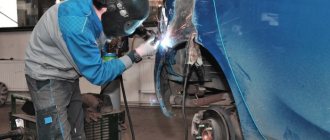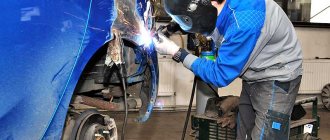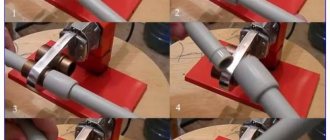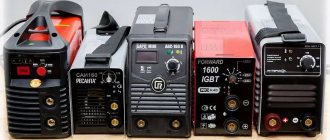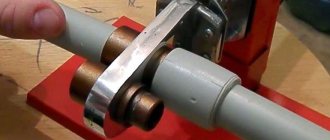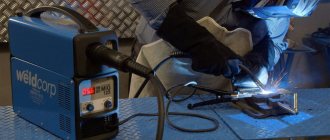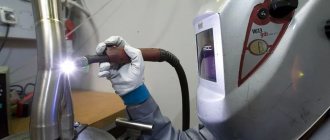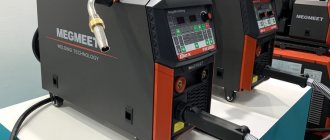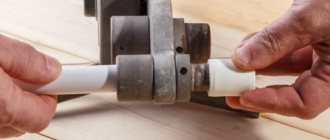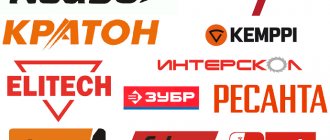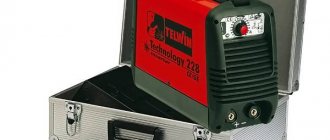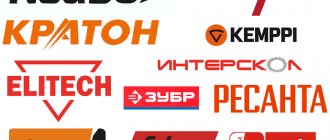Features of aluminum welding
This metal is very capricious when welding due to its physical and chemical properties. Its surface is covered with an oxide film even at room temperature. On the one hand, this is even good, because the oxidized layer protects the material from corrosion. But if you try to weld it just like steel, for example, you may run into a big problem.
The melting point of the oxide on the surface of an aluminum billet is about 2000 °C, while the material itself melts at about 600 degrees Celsius. Welding in the usual way will lead to the fact that the filler material will simply be laid on the surface, preventing the proper quality of the weld. An increase in amperage will cause burnouts. In this case, the weld pool will rapidly oxidize.
Aluminum when welding:
- Crystallizes quickly.
Hardening occurs after cooling by only 15-20 °C. - Incredibly fluid.
When molten, it resembles water, which makes it difficult to weld if the surface of the product is inclined. It is also this property that increases the risk of through burns during manipulation. - Retains color after melting.
For this reason, it is more difficult to control the state of the weld pool and calculate the required amount of filler material. - Evaporates hydrogen.
This occurs due to contact with the atmosphere. As a result, pores are formed in the suture structure, which make the joint more fragile. - Characterized by increased shrinkage.
There is a possibility that, upon cooling, the weld beads will sag more than necessary. You will have to additionally weld the craters in the seam.
To achieve the desired effect, it is enough to block the access of ambient air to the melting zone. For this purpose, inert gas media are used.
Selecting a welding machine
In addition to the TIG function, pay attention to some additional features. In particular, a good device should be intuitive for a master of any age and level of training. All adjustments, buttons and connectors must be labeled in large letters so that even an elderly person with poor eyesight does not have difficulty operating the device.
The device must generate a welding arc in a non-contact manner; in addition, it must have a slow arc extinction function. It would be useful to have the ability to control the polarity balance and the pulse welding mode. All these functions will not only simplify your work, but also significantly speed it up.
There are a lot of models of devices designed for aluminum and stainless steel on sale. The assortment is really large, so before purchasing, decide on some nuances that may become critical.
Welding current strength
The first thing you need to pay attention to is the maximum welding current. The thickness of the metal that you can weld and your capabilities as a craftsman depend on it. Most more or less serious models have a welding current of 200 Amps. And you may think that this is not enough. But it’s not so much the number that is important, but how the device manages this characteristic. For comparison, you can take two machines with the same welding current strength, but radically different costs and results of work.
For example, the BlueWeld PRESTIGE TIG 222 device costs more than $2000 and produces 200 Amps, while the Svarog PRO TIG 200 P DSP costs $500 and produces the same 200 Amps. A beginner will probably think that it is not worth paying extra for the expensive model from BlueWeld, since it produces the same maximum current. It’s only when you use it that the fun begins.
Devices with the same current strength, but from different price categories, produce radically different results. A cheaper device does the job, but is not able to provide the same quality of seams as a device from a high price category. It's all about the components used to design the devices and the additional functionality. The model from BlueWeld is more expensive not only because it is a well-known brand. It’s just that the manufacturer uses higher quality components when assembling it and introduces new technologies. And so it is with many devices.
Device class
Based on our example above, it is not difficult to guess that devices are divided into classes. Main classes: household, semi-professional, professional and industrial. We will not talk about industrial ones, since they are not entirely relevant to the topic of our article. But we’ll talk about the other classes in more detail.
Household welding machines for aluminum cost up to $500-700 and are readily purchased by home craftsmen. Such devices are suitable for infrequent repairs (including car bodies), for assembling small metal structures (for example, a canopy) and other simple work. This is the best option if you need a device for your country house or garage. Such devices weigh little because they consist of a small number of components. Easy to repair and modify.
Semi-professional models cost up to $1000-1200 and differ from household ones in greater functionality, thanks to which the welder has more opportunities. The weight of such devices is greater than that of household models. Again, due to increased functionality and the appearance of additional details. A semi-professional device is suitable for a master with an individual entrepreneur engaged in field work, or for a small workshop.
Professional machines cost from $1,200 to infinity (depending on the impudence of the manufacturer and seller :)) Such units are capable of performing the most complex welding tasks and are used in large industries or at expensive service stations. It is not advisable to buy such a device for home use, since in such conditions it is difficult to reveal its full potential.
Versatility of the device
Many units for aluminum and stainless steel are equipped not only with a TIG function, but also with an MMA function. This means that you can cook not only using argon, but also using regular coated electrodes. Simply put, it is simple manual arc welding. This feature turns the device into a universal assistant. However, not all models are equipped with this feature. When choosing a machine, pay attention to whether it is equipped with TIG and MMA welding. These aluminum welders are a little more expensive, but the versatility is still worth paying for.
Dimensions of the device
Welding inverters themselves are quite compact compared to transformers or rectifiers, which were actively used in the 20th century. However, a TIG welding machine comes with a lot of features that cannot be packed into an ultra-compact body. Don't expect a functional aluminum welding machine to weigh 5 kg like budget inverters for manual arc welding.
If a TIG welding machine weighs up to 10 kg, then it either has limited functionality due to its size, or is very, very expensive. Devices for household welding with more or less acceptable functionality weigh from 20 kg and more. Take this into account, because in addition to the inverter, you also need a gas cylinder and welding components, and all this must be transported somehow.
To solve this problem, you can buy or assemble a special cart. But the cart will not help if you need to take the device to the dacha on a crowded train and take it back to the apartment when cold weather sets in. So pay attention to the weight and dimensions of the device when purchasing.
Voting for the best aluminum welding machine
Which aluminum welding machine would you choose or recommend?
Svarog PRO TIG 200 P DSP AC/DC E201 00000092681
33.33 % ( 2 )
TCC TOP TIG/MMA-315P AC/DC 018095
16.67 % ( 1 )
Aurora STRONGHOLD 315M 17836
0.00 % ( 0 )
START PRO WEGA model TIG 205 AC/DC PULSE 3W205AP
33.33 % ( 2 )
QUATTRO ELEMENTI Multi Pro 2100 772-593
0.00 % ( 0 )
BRIMA TIG-180A
0.00 % ( 0 )
WERT MMA SWI 190 187150
0.00 % ( 0 )
Multi Pro 1700 165A QUATTRO ELEMENTI 790-052
16.67 % ( 1 )
Elitech MMA IS 220N
0.00 % ( 0 )
Welding Features
To weld aluminum with your own hands, you will need not only a machine, but also knowledge. In this article, we will not tell in detail how to cook aluminum with argon. We will tell you about the main nuances that need to be taken into account in order for the seams to turn out to be of high quality.
Before welding, do not be lazy and take the time to thoroughly prepare the metal. Degrease the surface, clean it and remove all traces of dirt. There are several cleaning methods, but the simplest is mechanical, using a regular metal brush.
The welding inverter for aluminum welding must be configured correctly. Consider the thickness of the metal and the diameter of the electrode. For welding, use high-quality argon, filler rods and non-consumable electrodes.
The technology for argon arc welding of aluminum is not as simple as other technologies, but you can achieve good quality seams if you follow a few rules.
Firstly, the filler wire must be placed exclusively in front of the non-consumable electrode. Not from the back, from the front. And you need to guide it along the seam. At the same time, feed the filler material smoothly and without sudden movements so that the metal does not splash. Secondly, the best seams can be achieved when welding the part in a horizontal position. So lay the part horizontally if possible. Third, try to cook on a short arc. It's not easy, but at some point you have to learn.
Which machine is best for welding aluminum?
Aluminum and alloys based on it are welded with argon or its mixture. For operation, devices operating on alternating current are used, having previously configured the appropriate options and mode. The quality of the inert gas requires special attention - the quality of the joints and their aesthetic appearance depend on it.
| Device type | Operating principle |
| Welding is carried out using aluminum wire melting in a torch. The welder directs the weld pool along the seam |
| For welding, pre-calcined electrodes are used to evaporate moisture |
| The work is carried out under an arc of high temperatures, argon is directly supplied to the welding point. To evaporate moisture, special electrodes are used, for example, made of tungsten |
Video - Selecting and setting up a machine for argon arc welding
How long do the consumables of a semi-automatic machine last?
When thinking about semi-automatic welding of stainless steel, it is worth knowing how long the consumables will last. The most quickly worn element is the current collecting tip. Through it, voltage is transmitted to the wire. The outlet hole in the mouthpiece breaks, causing the wire to start “walking.” This complicates manipulations to control the electric arc and reduces the quality of the seam.
When working with a semi-automatic device for 6-8 hours every day, 1-2 current-collecting tips will have to be replaced per shift. The welder should always have such parts in stock. Moreover, each wire diameter has its own mouthpieces. When welding is carried out either with 0.8 mm or 1.2 mm wire, the mouthpieces also change.
The wire feed channel lasts for several years. Then it gets clogged with dirt and the wire starts to get stuck. The pressure rollers of the pushing mechanism “live” up to 5 years. With active use of the equipment, the mass clamp gradually wears out - the grip weakens, the clamping “lips” burn. The service life depends on the original quality of the element. For amateur devices, the clamp will last for a couple of years, for professional ones - up to 7-10 years.
Installation regulators
Aluminum requires fine adjustments and lowering the current during the welding process. The main functions that an aluminum welding machine should have:
- contactless ignition;
- zoolocation – adjusting the arc polarity ratio;
- AC balance adjustment.
Non-contact ignition ensures the ignition of the arc without striking the part and its constant burning.
When operating in AC mode, the polarity of the arc changes from direct to reverse and vice versa. Zoolocation allows you to select the optimal direction of the current and the frequency of polarity changes.
The duration of pauses and pulses is adjusted by a balancer depending on the thickness of the metal being welded.
Additionally, the welder sets:
- starting current;
- magnitude and nature of the main current;
- Arc forcing.
In addition to these functions, several timers ensure high-quality welding. They are responsible for:
- gas supply before welding;
- current decay time;
- supply of gas after completion of work.
shielding gas is supplied before the start of the welding process - ignition of the arc. This ensures that the bath is completely closed before the melting process begins.
You need to start welding aluminum at a high current, then lower it. The timer automatically reduces the current after a certain time after starting operation.
Aluminum cools quickly, but it still takes time to prevent the seam from oxidizing and cracking. After the electric arc is turned off, gas is supplied to the working area for another 5–7 seconds .
Rod for soldering aluminum at home
Hi all! Many people know that aluminum is soldered mainly in an argon atmosphere with a special welding machine, but there is also an option for working with a gas torch, and even a turbo lighter can be used on a small scale.
In general, this is not my first acquaintance with this wire, but the shopping experience is not very good, so I will share not only the test result, but also trusted places to buy so as not to get sample No. 2 , but let’s start in order.
Content
- Characteristics
- Unboxing and appearance
- Testing
- Results
Characteristics
Diameter: 2.0 mm Length: 500 mm Soft solder ISO 3677: ~B-Zn98Al 381-400 Approximate composition (weight%): 2.4 Al – rest Zn Melting point ºС: 360 Tensile strength (MPa): Up to 100 (Al) Density (g/cm3): 7.0
Unboxing and appearance
The last and most profitable purchase was sample No. 3 from banggood.
Came in a small gray package
The rod is additionally packaged in a transparent zip bag.
5 meters cost me $8 with points, that is $1.6 per meter - go to the store
White powdery flux is visible in the center, the rod is moderately hard, looks like aluminum without oxidation
Comparison
The first one I bought was the leftmost sample No. 1 from Ali. Its properties are absolutely identical to sample No. 3 , but 3 meters cost me $12 , that is, $4 per meter , which is almost three times more expensive. check current price
In the center is sample No. 2 . It costs $5 for 3 meters or $1.7 per meter , like sample No. 3
But as soon as you take the bag in your hand, you realize that this is a POS with not very thick flux inside.
don't buy here
Two more samples at $8 for 3 meters were never delivered, they were probably not even sent.
Testing
Over time, aluminum becomes covered with an oxide film, due to which the surface becomes dull, so, before soldering, the surfaces must be cleaned to a shine, otherwise the solder will simply roll off in balls on the surface, regardless of the degree of its heating. Sample No. 1
In general, it is correct to heat the part to a temperature of about 400 degrees, and then simply move the rod, which will melt and fill the cracks, but I have little experience, so in order not to overheat the surface, I periodically bring the rod into the burner flame. If the temperature is low, the solder will roll down the surface like a ball; if it is sufficiently high, it will tin it.
The fracture test shows a good result - the break does not occur along the seam
Sample No. 2 . It melts very well, emits a lot of smoke, and smells like burnt “aspirin.” It sticks to aluminum, but if you overheat it, it burns out pretty quickly.
It is inconvenient to work due to the stench and the need to control the temperature.
Sample No. 3 . I decided to solder the tubes with the outer walls
We try to break the seam. After the tube came out of the vice, I clamped it higher, bringing it out of focus and only noticed this at the stage of creating GIFs
But there is a photo of the result which shows that the seam was not damaged.
And finally, let’s splice the aluminum tube with a piece of duralumin.
The tear test was also successful.
Results
An interesting wire - aluminum solders perfectly, filling even small gaps, the main thing is that the joints are not dirty. It also sticks well to copper, but experienced people say that it is better to use other alloys to work with it, although this rod is quite suitable for emergency field repairs.
The melting point of aluminum is about 660ºC, it would seem that you can use rods at 450-500 degrees, but you may encounter two problems: 1. A massive part needs to be heated up to 500 degrees with something else 2. You can overheat the soldering area and ruin the part
Sample No. 3 seemed to me the most optimal . It corresponds to the declared characteristics and costs at least half as much as the others. There are also lots of different lengths to choose from: 1 meter - $2.89 2 meters - $4.39 3 meters - $6.39 5 meters - $9.89
go to the store
Areas of use of a semi-automatic welding machine for stainless steel
Semi-automatic welding of stainless steel is widely used in various industries, workshops and at home. In enterprises, this can be the welding of car elements (bumper guards, running boards, exhaust system), the manufacture of large containers and manifolds for the chemical industry, water purifying industrial filters, etc. In the food industry, semi-automatic devices connect lines for supplying liquids (milk, juices, etc.) .
In everyday life, semi-automatic welding of stainless steel is useful in the manufacture of tanks, fences, and gratings. Having a semi-automatic stainless steel welding machine, you will be able to weld a burnt-out muffler yourself, make a container, or repair stainless cookware.
Operating principle of the equipment
The connection of parts made of non-ferrous metals or alloys is carried out using a semi-automatic welding machine for aluminum. When carrying out work, you must act in a certain sequence. First, you should set the polarity of the welding current, usually for flux-cored wire it is direct, and for a gas environment it is reverse.
Let's watch the video, a little about the principle of welding:
Then a reel of wire is mounted and carbon dioxide is connected. To do this, a reducer is installed on the cylinder, which is connected to the device using a hose. Before starting welding, adjust the wire tension.
Methods for processing welds
Unlike the TIG method, semi-automatic welding of stainless steel results in black seams. These are oxides from the melting of metal, gases, and the combustion of protective sprays. To keep the seam white, cleaning with a metal brush is required. Then the scales will be visible and the connection will become more beautiful.
If necessary, the seams can be sanded if this is the front side of the product. A mirror effect, like TIG welding, cannot be achieved without additional processing. To do this, the seam is cleaned with flap wheels, gradually reducing the grain size of the abrasive in order to remove all risks on the surface. Then the metal is polished with felt pads and paste.
Connection of stainless steel and black steel
Welding of such materials is carried out at direct current. The position of the wire is strictly perpendicular to the working area.
Stainless steel wire must contain manganese and nickel, for example, ESAB OK, Autrod. A special transition wire deposits a buffer layer, which connects the parts.
When welding St40 steel to stainless steel, you can use 08G2S wire. This strengthens the seam between two dissimilar metals after cooling. The most important thing in the process is that the stainless steel does not become too fluid, and the ferrous metal does not remain solid. The seam is made as wide and as deep as possible.
Technology requirements
The technology begins with careful preparation of the ends to be welded . Before work, the welding area on aluminum and duralumin parts is thoroughly cleaned of oxides. A grinder with a fine-grained wheel is suitable for this. The suture is applied continuously in one pass. Welding of aluminum pipes is done in 2 passes, from bottom to top.
The gas is turned on before the arc ignites. The process begins at high currents. Welding is completed at low currents. Welding machines must change current and voltage after starting work.
To weld aluminum, a tungsten consumable and non-consumable electrode is used . Filler rods for aluminum are used in two types: pure metal and cast aluminum with the addition of silicon.
Welding thin aluminum with argon. Thick sheets and parts are boiled in a protective argon-helium gas.
Before starting welding, the electrode should be sharpened . Melting into a semicircle. The non-consumable one is sharpened at an angle of 40⁰ with a small platform. During the welding process, there should be a drop of pure metal at the end that is smaller than the diameter of the electrode.
The arc length when welding aluminum should be constant within 12 - 15 mm. A shorter one will burn through the sheet, especially thin ones. A long arc will not heat up the metal as it should.
Welding of duralumin is carried out using the same technology as pure metal . Only the current decreases. When choosing the best way to weld duralumin, you should choose aluminum wire. On pulse devices, it simply flows in a stream into a heated bath and connects with the metal.
If a hobbyist has a boat and needs to repair it, a pulse inverter with an oscillator and a tungsten electrode with aluminum filler wire will do. A cheaper option for rare applications is AC argon-arc welding. For workshops with a large volume of work, it is better to choose a high-performance pulse machine or semi-automatic machine.
Life hacks for semi-automatic stainless steel welding
Next, we present useful life hacks for welding stainless steel with MIG machines, the relevance of which has been tested in practice:
- To weld alloy and austenitic steels, set the semiautomatic machine to reverse polarity. This means that the “plus” must be suitable for the burner, and the “minus” must be suitable for the product. This will reduce heat input and protect against active burnout of alloying elements. When welding thin stainless steel, the product is less deformed.
- Sew quickly. Then it will not be overly wide and lumpy. When welding semi-automatically, stainless steel does not spread much over the surface, which means delays in one place will lead to sagging.
- Cook at an angle backwards, from left to right. This way the weld pool is clearly visible, and the liquid metal remains protected by the gas mixture longer. This prevents the occurrence of pores and cracks.
- When welding stainless steel sheets with a thickness of 1-2 mm, the wire stickout should not exceed 6-10 mm. Welding is carried out with a short arc. Austenitic steels with a thickness of 5 mm or more are welded with a long arc with a wire extension of 10-20 mm.
- Weld stainless steel only in a mixture of argon (80%) and carbon dioxide (20%). Welding in pure argon is possible, but penetration will be reduced and the edges will be less wet.
Some features of aluminum and its alloys
Aluminum differs from other metals in its high thermal conductivity, chemical reactivity and low specific gravity. A welding machine for aluminum must work quickly and protect the weld pool well . Conventional equipment for metal structures and body welding will not be able to provide conditions suitable for welding aluminum.
Aluminum oxidizes quickly even when cold at room temperature. The oxide film formed on top is much harder than the base metal and melts at 2000⁰C, which is 2 times higher than the melting point of aluminum itself. Part of the strength of lightweight duralumin parts is provided by a hard film of aluminum oxide. When mechanically stripped to bare metal in the open air, the oxide film is restored very quickly.
Aluminum has a high coefficient of linear expansion when heated. If the parts are overheated, they will be severely warped.
High thermal conductivity contributes to the rapid spread of heat throughout the body of the part and the same almost instantaneous cooling of the seam, when the slag has not yet come out.
Operation of equipment during operation
Aluminum is welded at high currents and high frequencies. For equipment, this mode poses a large load. The work-rest regime specified in the technical data sheet of the equipment should be observed.
You should fine-tune the device and check the grounding.
When working on a semi-automatic machine with aluminum wire, the length of the hoses should not exceed 3 meters. The nozzle should be chosen wider than usual. Aluminum wire is soft and expands greatly when heated. As a result, friction occurs and it jams.
The gas nozzle is selected with a wide nozzle and a mesh inside. The flow is uniform and covers the bath well.
